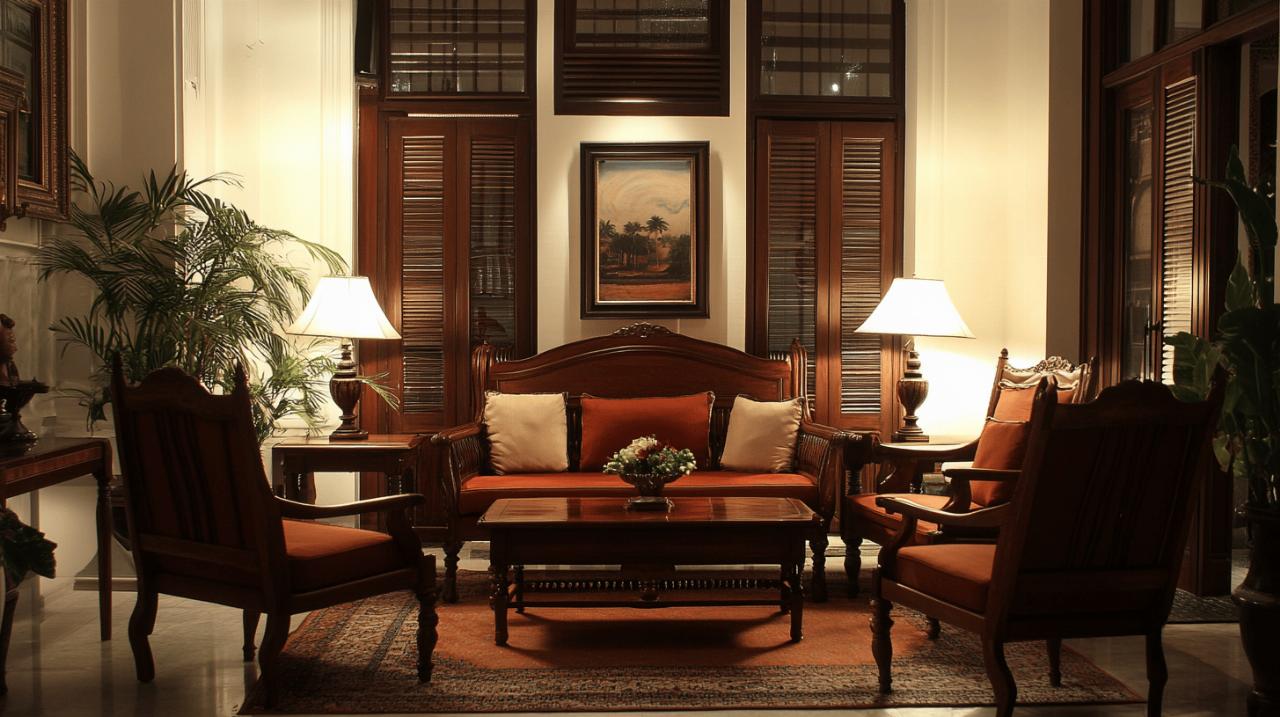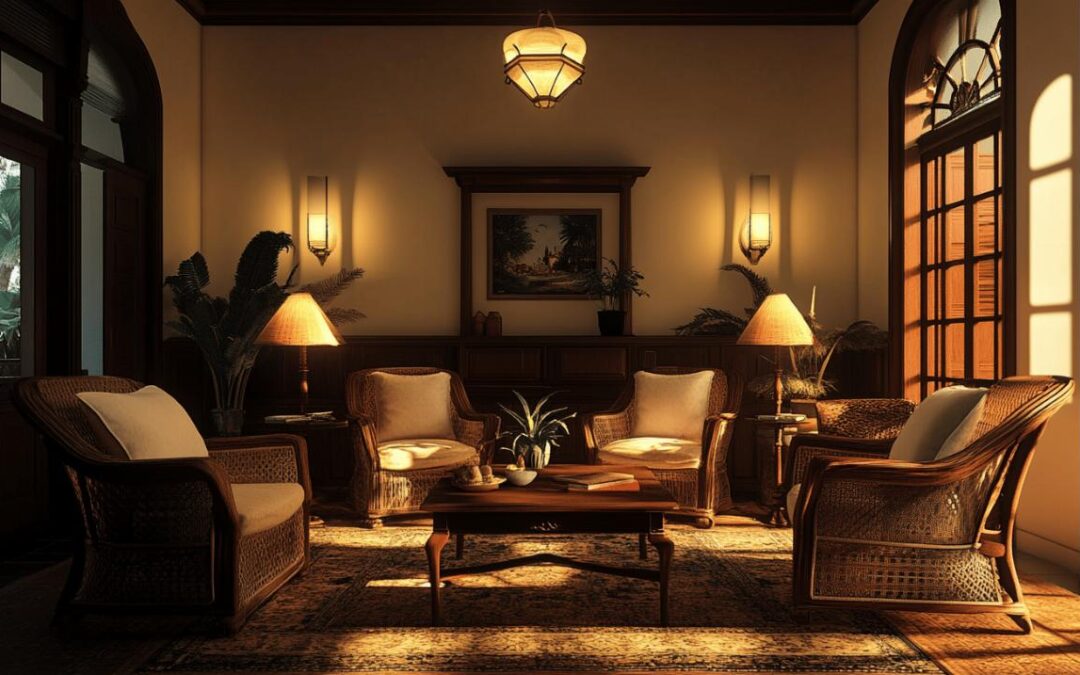In the world of interior design, creating cozy spaces within your home isn't just about filling rooms with furniture; it's about crafting environments that reflect your personality while providing comfort and style. Colonial furniture and lighting offer a timeless approach to home decoration, blending historical elegance with practical functionality. Whether you're drawn to the ornate details of French colonial pieces or the tropical elements of British colonial design, incorporating these styles can transform ordinary rooms into extraordinary living spaces that feel both sophisticated and inviting.
Understanding colonial style furniture
Colonial furniture represents a diverse collection of styles that evolved across different regions during colonial periods. These pieces often showcase exceptional craftsmanship and attention to detail that modern mass-produced furniture frequently lacks. Many homeowners seeking to create a distinctive look in their homes find inspiration in colonial designs, particularly those looking to emulate the elegant ambiance found in destinations like Residence La Pergola Stintino, where traditional Mediterranean elements blend seamlessly with colonial influences.
Key characteristics of authentic colonial pieces
Authentic colonial furniture typically features solid wood construction with meticulous hand-carved details. Dark woods such as mahogany, teak, and rosewood dominate British colonial designs, lending a sense of gravitas and permanence to living spaces. The emphasis on natural materials extends beyond wood to include rattan, wicker, and bamboo elements that add textural interest. Quality craftsmanship reveals itself in dovetail joints, ornate carvings, and sturdy construction designed to withstand tropical climates and travel.
French colonial style, in contrast, often incorporates more delicate elements while maintaining durability. Cane-back chairs represent a signature piece in this tradition, combining elegant profiles with practical ventilation for warmer climates. The integration of velvet and linen upholstery adds luxurious comfort while maintaining the historical authenticity of these designs.
Regional variations in colonial furniture design
Colonial furniture styles vary significantly based on their geographical origins, each reflecting unique cultural influences and practical adaptations. British colonial design emerged from the fusion of traditional English furniture with tropical elements found in colonized regions. This style embraces a colour palette grounded in neutral tones such as whites, creams, and beiges, which serve as a canvas for more vibrant accents inspired by local environments.
French colonial furniture tends toward more ornate profiles with intricate detailing and lighter visual weight. The boho style elements often incorporated into contemporary interpretations of French colonial design include layered textures, eclectic accessories, and a more relaxed approach to formality. This fusion creates spaces that feel both historically grounded and personally expressive, allowing for creative freedom within an established design framework.
Selecting colonial furniture for different rooms
 When incorporating colonial furniture into your home, considering the function of each space helps determine which pieces will work best. Colonial designs offer versatile options for every room, from statement pieces that anchor a space to smaller accents that add character and detail. Thoughtful selection creates cohesive environments that balance historical references with contemporary comfort.
When incorporating colonial furniture into your home, considering the function of each space helps determine which pieces will work best. Colonial designs offer versatile options for every room, from statement pieces that anchor a space to smaller accents that add character and detail. Thoughtful selection creates cohesive environments that balance historical references with contemporary comfort.
Creating intimate living room arrangements with colonial pieces
Living rooms benefit from colonial furniture that encourages conversation and comfort. Large comfortable sofas with linen or cotton upholstery provide ample seating while maintaining the aesthetic of the period. These can be complemented by cane-back chairs arranged to facilitate interaction rather than focused on television viewing. The addition of a sturdy dark wood coffee table creates a natural gathering point while showcasing the rich materials characteristic of colonial design.
Statement lighting plays a crucial role in establishing ambiance in colonial-inspired living spaces. Vintage chandeliers or rattan pendants can serve as focal points while providing necessary illumination. These fixtures often incorporate metallic accents in brass, copper, or gold that catch the light and add warmth to the room. Layering lighting sources at different heights creates depth and allows for adjustable atmosphere based on time of day or occasion.
Bedroom and dining spaces enhanced with colonial charm
Colonial bedrooms typically center around substantial bed frames, with four-poster designs being particularly emblematic of the style. These dramatic pieces can be softened with white linens and decorative mosquito netting that adds both visual interest and a sense of enclosure. Plantation shutters control light while maintaining the architectural authenticity of the space. Natural materials continue throughout bedroom furnishings, with rattan chairs and campaign chests offering practical storage with historical references.
Dining areas showcase the formal aspects of colonial design while accommodating contemporary entertaining needs. Sturdy dark wood dining tables anchor these spaces, often surrounded by chairs that blend comfort with period aesthetics. Table settings might include natural fibre tablecloths and white porcelain dishes that highlight the clean lines and elegant simplicity found in colonial dining traditions. Centerpieces featuring tropical elements bring life and color to these gathering spaces, referencing the exotic environments where colonial design evolved.
Throughout all rooms, the integration of earthy tones like beige, terracotta, and olive green creates a grounded palette that can be enlivened with jewel tones such as emerald, sapphire, and amethyst. These color choices reflect both the natural materials fundamental to colonial furniture and the vibrant environments that influenced colonial design development. Accessories including vintage maps, globes, botanical prints, and handmade pottery add personal touches that complete these thoughtfully designed spaces.

